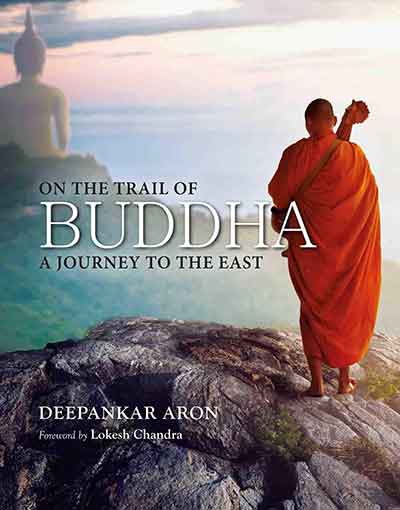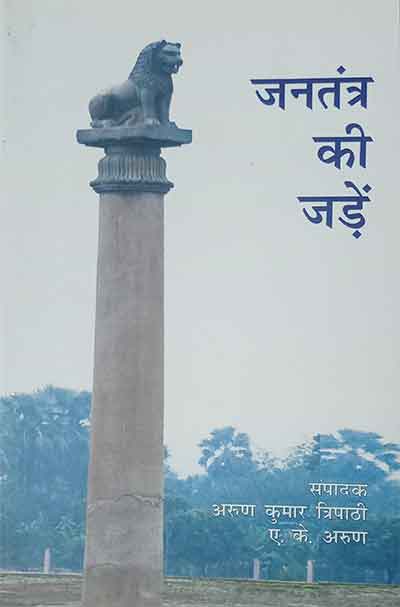
On the Trail of Buddha—A Journey to the East is ‘a unique sojourn in the search of the spiritual, philosophical, and cultural linkages that bind India to the East Asian civilizations. From the wandering monks of Asia to the temples and monasteries they visited; from the statues and frescoes in grottoes to those in the museums; from the diverse ethnicities of the people to their common gods and goddesses—the book explores the ‘ancient India’, beautifully preserved in the traditions, art, and architecture of China, as also in Mongolia, Korea, and Japan, to where it spread from China’, read the blurb.
Deepankar Aron, an alumnus of IIT Delhi, recognized with the Presidential Award for his contribution as an Indian Revenue Service officer, is a passionate traveler, a consummate photographer, and a writer. In the present book, he has put together his craving for photography and travel.
The glossy book all of 300-plus pages discovers the unity in diversity of cultures connected by two thousand miles of the Silk Road and separated by two thousand years of history. The fact that it has taken the author nine years to come out with the book itself is an accomplishment.
Tracking the path of the peripatetic Buddha over the plains and mountains can be an instructive journey. But it can also be a daunting task for those trying to distinguish history from legend. Aron’s book explores the ancient India that is preserved in the traditions, art, and architecture of China including the contribution of two Indian monks to the Shaolin temple and martial arts.
According to Aron, there are thousands of monks who traveled spreading Buddhism across Asia. From Dafo of Leshan, the world’s highest rock-cut Buddha to the Floating Temple of Itsukushima-Jinja in Japan, he writes about many world Heritage Sites and unique destinations.
From the wandering monks of Asia to the temples and monasteries they visited; from the statues and frescoes in grottoes to those in museums; from the diverse ethnicities of the people to their common gods and goddesses, the book attempts to touch upon the ethos of the East Asian culture and its deep-rooted linkages with the Indian civilization.
Beginning at Karakhoja, the erstwhile capital of Xinjiang, the book covers ancient cities along the Silk Road in China, the north-south trade axis that connects China with Mongolia, travels from Sichaun in south-western China to Mount Kailash and Lake Mansarovar, thereafter moving from south-eastern coastal China from Hong Kong to Shanghai, and then to Taiwan from Taipei to Kaohsiung. From there, it moves to Korea and Japan. Crisscrossing 98 destinations across 37 locations, it is a remarkable voyage of discovery across East Asia.
Prof. Lokesh Chandra in the foreword says: ‘This flowing and illuminating account of the pilgrimage rejuvenates our memories about the tread of Indian sages and scholars on the pathways of thought, which continues to resonate in and architecture , mind, and meditation of the East Asian and North Asian Islands’.
Aron writes in the introduction: ‘Another fascinating discovery during this journey was how apart from goods, trade and commerce, political influences also moved along the Silk road or along the North-South trading axis between China and Mongolia or along the maritime routes between India China, Japan, and Korea’.
Divided into half a dozen chapters and copious numbers of photographs, this lavishly produced book is a wonderful exploration of the Buddha theme. Part travelogue and part historical expedition, this in-depth book brings out some interesting factoids. For example, Bodhidharma is believed to have brought the South Indian martial art form Kalaripayattu to China, where it was later modified into kung fu or wushu.
Damo’ or ‘Tamo’, as he is popular in China, came to the Shaolin temple, 22 years after it was founded in 495 AD. Born in a royal family in Tamil Nadu’s Kanchipuram, Damo, who is also known as Bodhidharma, meditated for nine years in a cave about four kilometers from the temple.
The book ‘will surprise one as to how connected we have stayed with each other, over the past thousands of years, when modern amenities of communications were non-existent, It is , in the very least, a humbling discovery’, concludes Aron.
An admirable book by the author who has an amazing sense of Buddhist antiquity.
On the Trail of Buddha—A Journey to the East
Deepankar Aron
Niyogi Books
New Delhi
2020
Bhaskar Parichha is a senior journalist and author based in Bhubaneswar
SIGN UP FOR COUNTERCURRENTS DAILY NEWSLETTER
















































